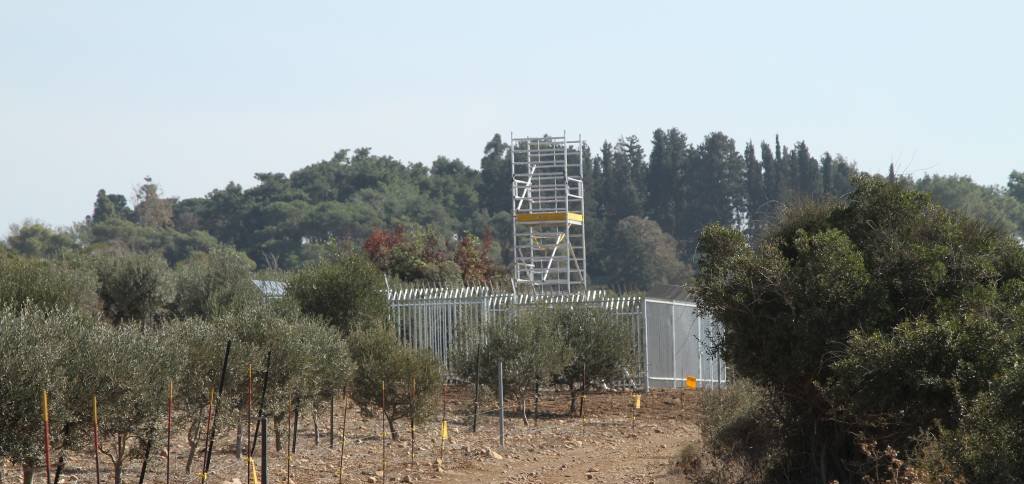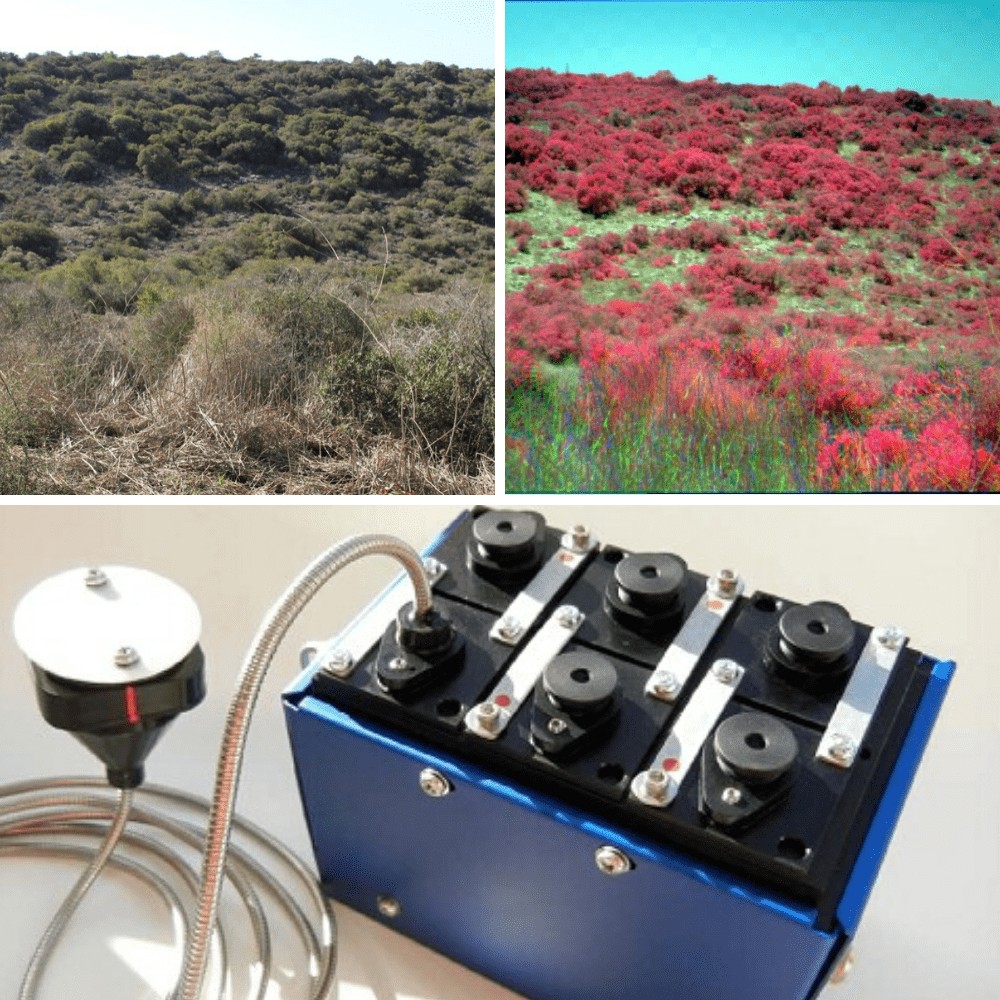multispectral camera data. In parallel, from the digital camera data we can calculate relatively simple indices based on the values of the digital numbers (DN) in the visible spectrum only.
During the first research year (April 2014 – April 2015), physiological measurements (water potential, stomatal conductivity and chlorophyll content) were performed every two months on 24 representative trees and shrubs, in order to link the spectral indices to the biophysical measurements.
As part of the analysis of the multispectral camera data, annual time series of NDVI were constructed for each of the monitored trees and for the entire study area. These time series presented characteristic phenological patterns for evergreen Mediterranean tree species, with higher NDVI values during spring. The physiological measurements that were performed in parallel during this year showed a physiological response of the trees to the seasonal water deficit, expressed by a decrease in the values of water potential and limited stomatal opening, mainly during summer. Similarly, examination of the correlation between NDVI values and leaf chlorophyll content showed that the relationship between these indices is not significant, probably due to the methodological difficulty in appropriately representing the entire tree canopy during the sampling season.






